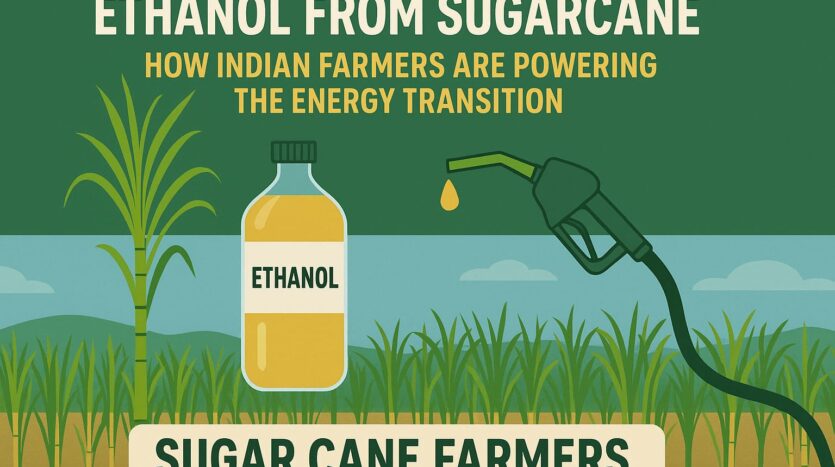Ethanol from Sugarcane: How Indian Farmers Are Powering the Energy Transition
Agriculture in India is no longer limited to food production—it is also becoming a key driver of energy sustainability. With the Government of India allowing unrestricted ethanol production from sugarcane juice, syrup, and molasses starting from the 2025/26 ethanol supply year, farmers and millers are entering a new era of opportunity. This shift directly supports India’s ambitious goal of achieving 20% ethanol blending in petrol, while opening a fresh income stream for sugarcane farmers.
🌱 What Is Ethanol Blending?
Ethanol is a biofuel made from sugarcane and other crops. When blended with petrol, it reduces carbon emissions and cuts down India’s dependency on imported crude oil.
Current Target: India aims for 20% ethanol blending by 2025.
Benefit for Farmers: Higher demand for sugarcane means better prices and income security.
🔑 Government Policy Update (2025/26)
Farmers and sugar mills can now divert sugarcane juice and syrup directly for ethanol production without restrictions.
This ensures predictable demand, reduced sugar surplus, and additional earnings for the rural economy.
Encouragement for mills to set up ethanol plants, supported by government subsidies and loans.
🌍 Why This Matters for Farmers
Telangana & Maharashtra Context: Districts like Karimnagar, Khammam, and Nizamabad (with sugarcane belts) can benefit directly from this policy.
Diversification: Farmers no longer depend only on sugar prices. Ethanol ensures an alternate, stable revenue stream.
Sustainability: Reduced stubble burning, efficient crop utilization, and contribution to a cleaner environment.
🚀 The Bigger Picture
Ethanol production is not just about farmers; it is about energy independence for India. By replacing imported oil with locally produced biofuel, India saves foreign exchange and moves toward its net-zero emission goals.
Conclusion
Sugarcane is no longer just a crop—it’s becoming an energy currency. The government’s policy shift gives farmers an opportunity to play a key role in India’s energy transition. For rural communities, this means more jobs, better prices, and long-term growth.
👉 Do you think sugarcane-based ethanol can become the backbone of India’s clean energy revolution? Share your views in the comments!




